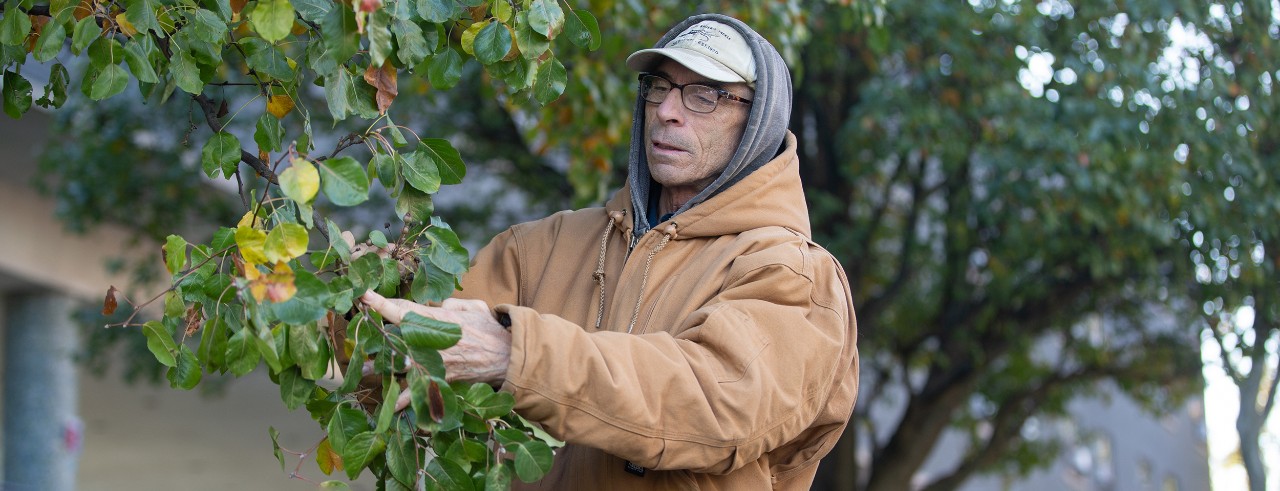
Public gardens contribute to invasives problem
UC plant survey finds nonnative invasive species thriving in southwest Ohio
Botanist Denis Conover does not have to go far to study the growing problem of invasive plants.
During an autumn stroll outside his office at the University of Cincinnati, the biology professor pointed out numerous examples of nonnative, invasive species in campus landscaping.
“This is winged euonymus, otherwise known as burning bush. And here is Chinese silver grass. It’s a popular ornamental, but the seeds are dispersed by the wind,” he said.
And there were many others: English ivy, wintercreeper, Callery pear.
For his latest study published in the journal Ecological Restoration, he and his students examined the impact that nonnative, invasive plants are having on forests. He found that plants at arboretums and public gardens inadvertently can seed wild areas with nonnative plants.
“The nonnative, invasive species are very detrimental to native ecosystems,” Conover said “Once they get going in the natural areas, they can take over and exclude the native plants and the animals that depend on them.”
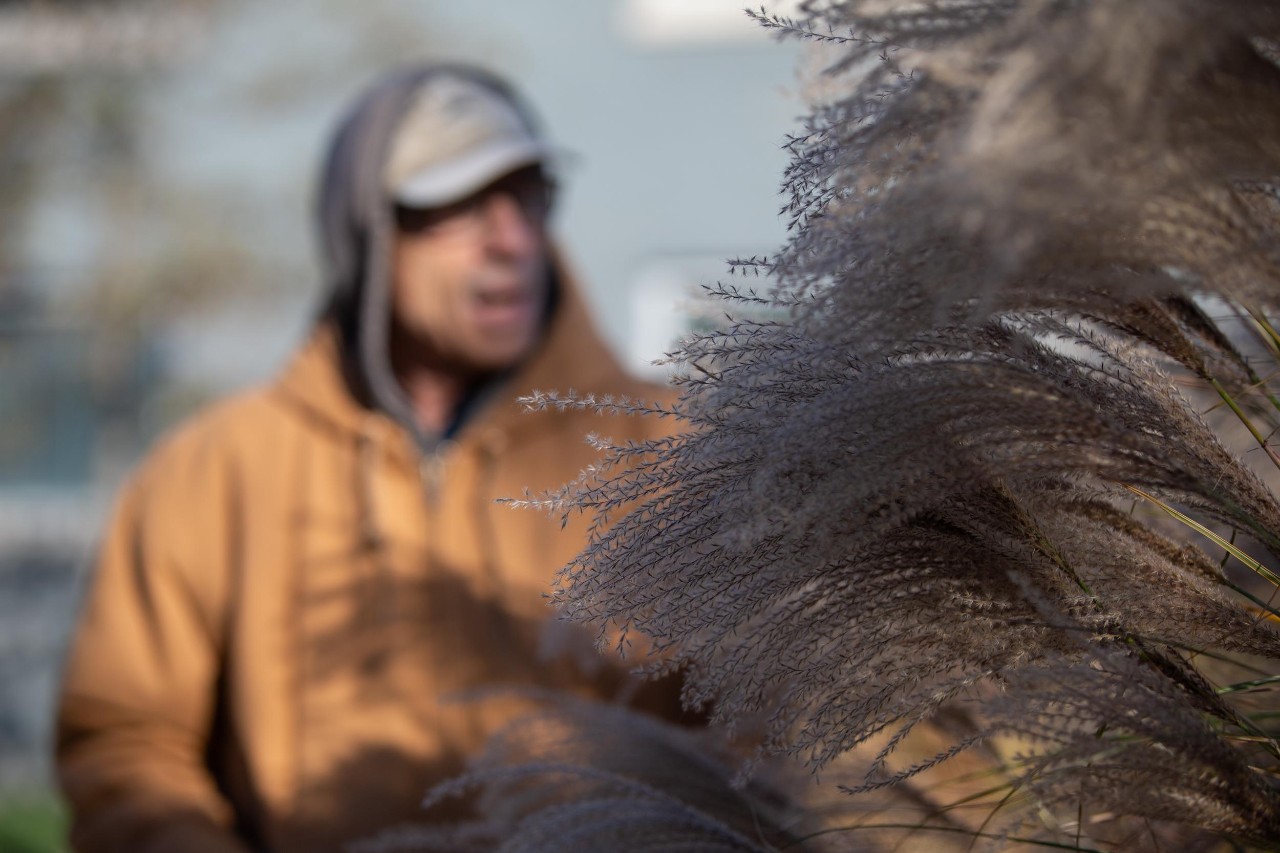
A UC study published in the journal Ecological Restoration found that public gardens are helping nonnative, invasive species such as this Chinese silver grass escape cultivation to wild areas. Photo/Andrew Higley/UC Marketing + Brand
The example he used was the arboretum at Cincinnati’s Spring Grove Cemetery, which has recorded more than 1,200 species of trees, shrubs, vines and other plants over its 178-year history. The arboretum is home to 26 noteworthy, mature trees known as “champions” for being the largest or best representation of their species, including a national champion September elm tree and an Ohio champion American yellowwood.
Conover said the arboretum is home to many beautiful native plants, including an enormous white oak that was a sapling when the Mayflower dropped anchor in Plymouth Colony. But Conover said some exotic plants at the arboretum are bearing fruit and seeds that are being carried by birds or the wind to neighboring woods.
You don’t know. It may take decades before they show any signs of being invasive, like the Callery pear tree.
Denis Conover, UC Educator Professor
Some exotic plants introduced to people’s yards and gardens will never pose a problem. But others can become invasive.
“You don’t know. It may take decades before they show any signs of being invasive, like the Callery pear tree,” Conover said.
UC has documented thousands of native and nonnative plant specimens at Spring Grove in surveys by people such as Kate Nordyke, the cemetery’s former herbarium specialist. Conover now serves in that role as a volunteer, documenting plants to create a record that future scientists can use to study changes in the region’s biodiversity over time.
“Despite its proximity to the city center, there is a substantial amount of intact greenspace at Spring Grove and the surrounding community,” Nordyke said. “This, in turn, supports a surprising diversity of plants and animals.”
Nordyke said she was alarmed by how easily some cultivated plants have spread to natural areas.
“Seeing this brought to light even more the importance of making informed choices about what we plant in our own yards and gardens,” she said.
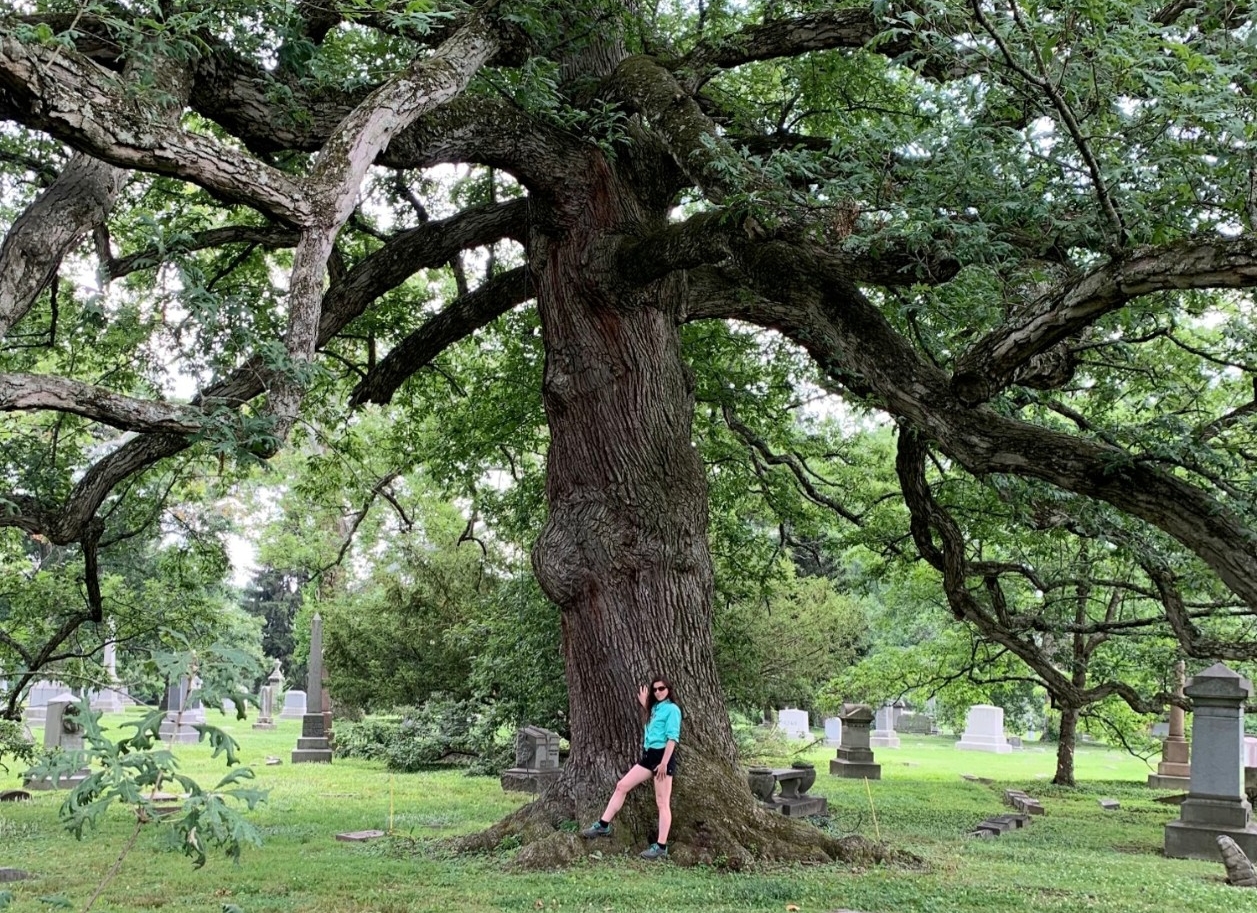
Kate Nordyke, the former herbarium specialist at Spring Grove Cemetery & Arboretum, stands in front of a 400-year-old white oak tree at the cemetery. Photo/Denis Conover
Invasives at city parks
Conservation technician Drew Goebel at Cincinnati City Parks said one example is the cemetery’s beautiful Amur cork tree, a state-record tree. Its seeds are sprouting in a park adjacent to the cemetery, Parker Woods Nature Preserve.
“There we found a population of 25 mature Amur cork trees. We took core samples and found that the oldest of them was 60 years old. The oldest six trees are male but then a female tree sprouted there and they began to take off,” Goebel said.
And nine years ago, volunteers cleared acres of nonnative, invasive Amur honeysuckle from Cincinnati park’s Buttercup Valley Nature Preserve, creating fertile ground for another invasive species, Higan cherry, to take hold, he said.
“We found a big stand of them — 50 or 60 that we pulled out all at once,” he said.
“The reason we don’t have more of these other invasives showing up is because another dominant invasive, Amur honeysuckle, was introduced in greater numbers and has already taken over that niche,” Goebel said.
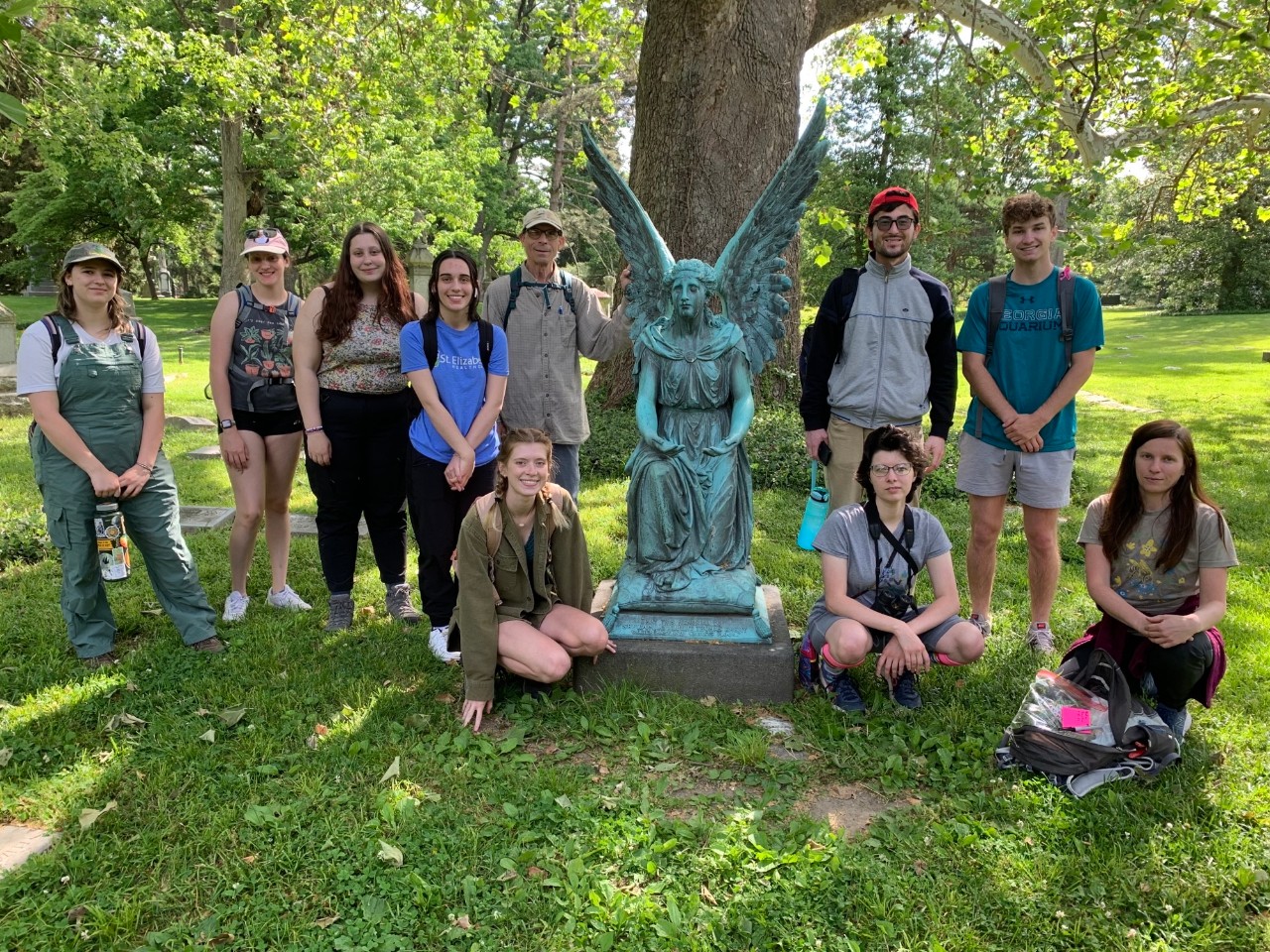
UC Professor-Educator Denis Conover leads regular botanical walks at Spring Grove Cemetery & Arboretum. He and his students collect plant specimens for UC's Margaret H. Fulford Herbarium. Photo/Provided
Conover said Spring Grove has several large Higan cherry trees native to Asia.
“The trees have attractive flowers in the spring, but the fruits are eaten by birds that disperse the seeds into the natural areas,” he said.

Denis Conover holds fruit from a nonnative, invasive Callery pear tree. States like Ohio have outlawed the sale of Callery pear trees and several other nonnative species in a bid to curb their spread into wild areas. Photo/Andrew Higley/UC Marketing + Brand
David Gressley, director of horticulture at Spring Grove, said the cemetery is taking important steps to address the spread of invasive species. The cemetery stopped planting English ivy and wintercreeper, two common invasive species, and began replacing it with native ground covers.
“This is the first full season where I had a crew dedicated to invasive plant control,” Gressley said.
They were able to remove English ivy that covered most of a champion bald cypress tree. And they began removing porcelain berry, a vine from Asia known for its pretty blue and purple berries.
“We definitely put a dent in it,” he said. “It’s a continuous battle.”
Educating consumers
Why does it matter?
“People who are trying to protect natural areas and preserve native plants and animals are spending huge amounts of time and money to eradicate nonnative, invasive plants,” Conover said. “The overuse of herbicides and mechanical equipment results in collateral damage to native plants and animals and to people.”
Meanwhile, Conover said, people continue to buy and plant invasive trees, shrubs and flowers for their yards instead of native alternatives, which benefit insects, birds and other wildlife.

UC graduate Olivia Canterbury is co-author of a paper examining how public gardens and arboretums are helping nonnative, invasive species spread to natural areas. Photo/Denis Conover
Study coauthor and UC graduate Olivia Canterbury said she thinks more should be done to educate people about invasive species, particularly emerging ones that could present a problem. Her father, ornithologist Ronald Canterbury, teaches in UC’s biology department.
“I was taken aback by the number of nonnative species I saw in Cincinnati's wooded areas,” she said. “I think our best solution is to keep bringing awareness to the issue and encouraging planting native species.”
City Parks' Goebel said forests dominated by invasive species become degraded over time in more ways than one. Amur honeysuckle shades out and kills native ground-hugging plants and vines, he said. These forests don’t retain as much water or soil and provide far less wildlife habitat than native forests with their large variety of species.
“It’s not providing the same benefits to us, either, that a native forest would,” Goebel said. “It’s not going to sequester the same amount of carbon. It’s not going to mitigate stormwater runoff like it normally would. It weakens the whole system when it’s reduced to just a few species.”
But Goebel said there’s still time to do something about it.
“The good news is we’re at the beginning of the problem. If we can convince people to act when the problem is small, that’s the best time to intervene,” he said. “When it gets to the stage where it’s out of control like honeysuckle, you get to a breaking point where it’s just infeasible to deal with it.”
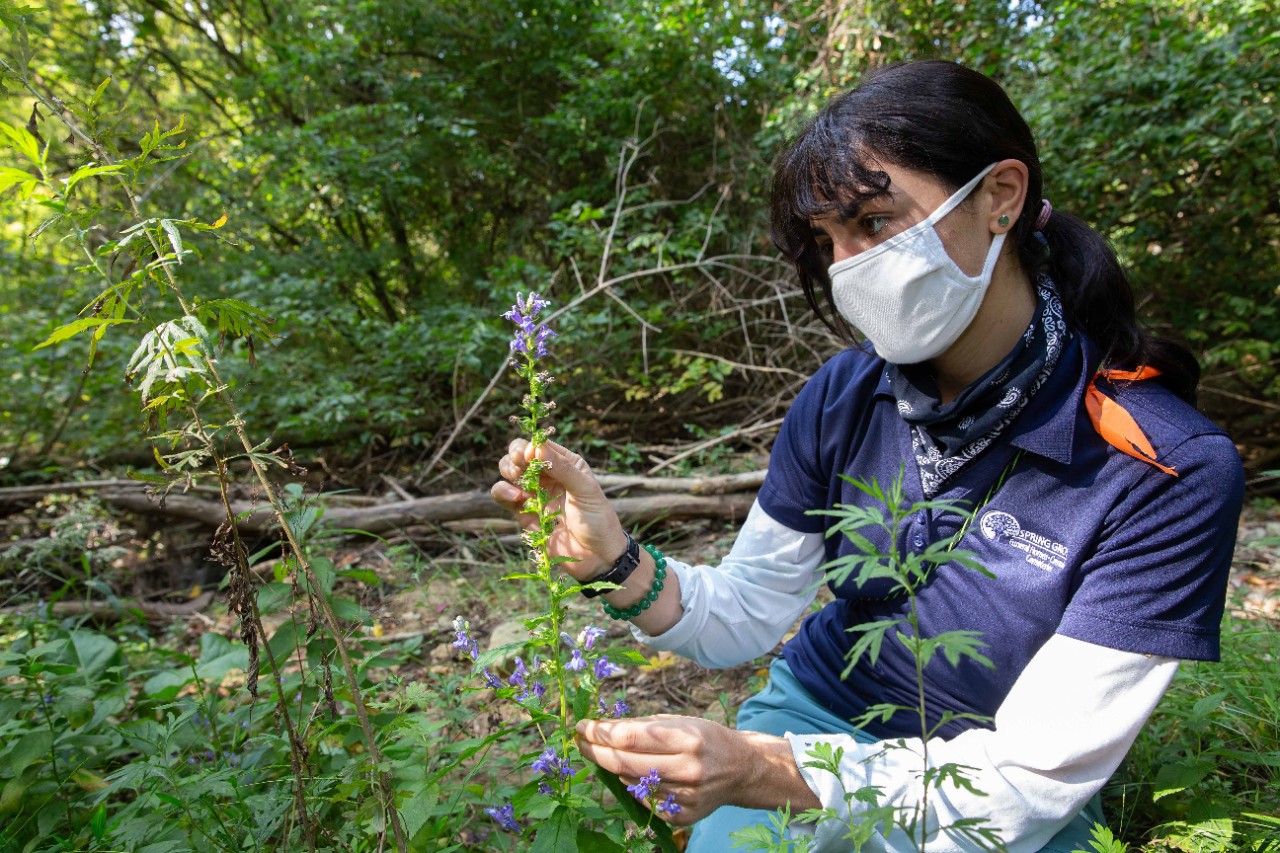
UC graduate Samantha Al-Bayer is co-author of a new study examining the ways public gardens like those at Spring Grove Cemetery & Arboretum are helping nonnative, invasive species to propagate in wild areas. She worked on a plant survey in this 2020 file photo at the start of the COVID-19 pandemic. Photo/Lisa Ventre/UC
A national problem
Co-author Samantha Al-Bayer, a UC graduate, is now working in Guam, a U.S. territory in the Pacific Ocean that has a long history of dealing with invasive species such as brown tree snakes that wiped out native birds.
“Invasive species hit a lot harder and faster on islands,” Al-Bayer said. “This is due to the island’s isolation and the lack of natural predators to control foreign species.”
When the birds disappeared, many of the plants lost their best or only ways of dispersing seeds. On Guam, officials are vigilant to prevent brown tree snakes from reaching other nearby islands stowed away on airplanes or boats, she said.
“This is especially important for cargo being shipped to any of the other Marianas islands since those islands are still free of brown tree snakes and still have beautiful endemic birds,” Al-Bayer said.
Conover said homeowners can do something about invasive species, first by removing any on their properties. And they can choose to replace them with native trees, shrubs and flowers, he said.
“A ginkgo tree supports virtually none of our native insects or birds,” he said. “But if you plant a white oak, there will be several hundred species of insects eating its leaves and providing food for birds along with its acorns.
“So plant an oak,” he said.
Featured image at top: UC botanist Denis Conover said nonnative, invasive plants cultivated in landscaping is turning up in natural areas. Photo/Andrew Higley/UC Marketing + Brand
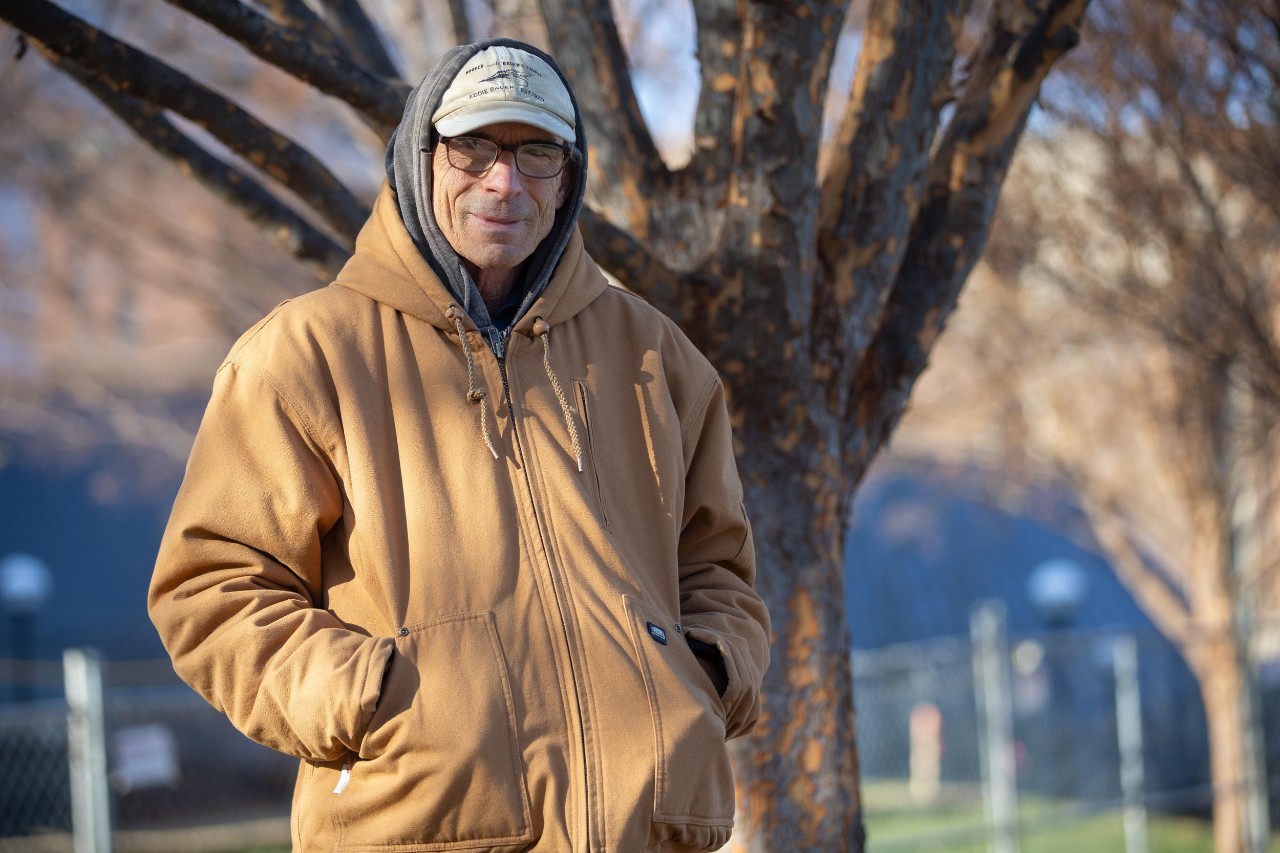
Botanist and UC Professor Educator Denis Conover leads public botanical walks at places like Spring Grove Cemetery & Arboretum and Burnet Woods. He is studying ways that public gardens inadvertently are helping nonnative, invasive species reach wild areas. Photo/Andrew Higley/UC Marketing + Brand
Next Lives Here
The University of Cincinnati is classified as a Research 1 institution by the Carnegie Commission and is ranked in the National Science Foundation's Top-35 public research universities. UC's graduate students and faculty investigate problems and innovate solutions with real-world impact. Next Lives Here.
Related Stories
Ancient Maya used sustainable farming, forestry for millennia
June 24, 2022
University of Cincinnati researchers found evidence of sustainable agriculture and forestry spanning a millennia in one ancient Mayan city.
UC project targets pesky mosquitoes’ genes
February 21, 2022
Researchers at the University of Cincinnati examined genetic material of three species of mosquitoes responsible for killing millions of people around the world each year. In a collaboration between UC’s chemistry and biology departments, researchers revealed the surprising genetic modifications female mosquitoes undergo, in part to create the next generation. Using tools called liquid chromatography-tandem mass spectrometry, researchers found as many as 33 genetic modifications in the transfer RNA of female mosquitoes. Like DNA, transfer RNA serves as the building blocks of life, communicating the genetic code from DNA to build new proteins that regulate the body’s tissues and organs.
Hungry eyes: Spiders lose vision when they’re starving
April 20, 2023
Biologists at the University of Cincinnati discovered that underfed jumping spiders lose light-sensitive cells that are key to their vision.
